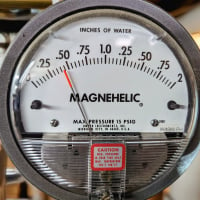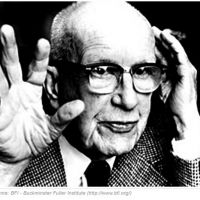Best Of
Re: Home heating oil pipe
Look up flaring on youtube, you'll figure it out.
Some of the reasonably priced tools on Amazon will work more than good enough for what you're after. Just make sure you do some practice flares first and try to leave some extra material when you're doing the real ones in case you mess up.
The #1 mistake everyone makes, including pros is forgetting to put the nut on the tube before doing the flare. Then you get to cut it off and do it again.
 ChrisJ
ChrisJ
Re: Heat Pump vs In floor radiant electric boiler
Ducted air to air is the way. If you ever need AC, it can do that too. No compelling reason to mess with hydronics on a low load new build.
Re: ISSUE PLEASE HELP: Goodman Furnace Model: GMS951155DXA
Is there an led flashing a code on the board? Seems like the fan is a signal pattern. The fault code will tell you more, like open limit or something.
 Teemok
Teemok
Re: ISSUE PLEASE HELP: Goodman Furnace Model: GMS951155DXA
is it in an attic? is the fan control for the heat a thermostat rather than a timer?
Re: Heated church seats
Do not be indolent when zeal is required. Be thoroughly warm-seated, the Lord's own servants, Romans 12:11
I guess the Pastor of this church took it literally when the original boiler was installed.
Re: HTP Munchkin 926 0-10v control
If you can find a picture of the kit that will tell you if it is some electronics or just a breakout. I'd use resistors instead of a fuse that way it will limit the current instead of shorting something then blowing the fuse because it shorted (although a 9v doesn't have much current available so it damaging something is unlikely)
Re: ISSUE PLEASE HELP: Goodman Furnace Model: GMS951155DXA
does it do it if you disconnect the thermostat wires ate the furnace?
is it some sort of "smart" thermostat?
Re: Baseboard Element Sizing
what type if boiler? I would not use primary secondary unless you have a boiler that specifically call for it
Conventional cast iron, copper tube or electric could be direct piped
 hot_rod
hot_rod
Re: Baseboard Element Sizing
Baseboard is sized at the "average water temp it will see. A conventional boiler is usually sized at 20 degree TD between supply and return. So with a 190 supply and a 170 return you would size the BB at 180 degree. The lower the water temp you run the more fuel you will save but it requires more BB to do the job.
Water flow through the BB should be 1 gpm for each 10,000 btu when using a 20 deg TD
If you are using a mod con boiler you have more flexibility in design. Lower water temps and wider TDs can be used but the design will change completly.
Re: Baseboard Element Sizing
Not really. The baseboard manufacturer gives you the BTUh per foot at various temperatures. You know the temperature you are feeding them with. You know the room heat loss. That's about it.
I hope you are piping them either reverse return or individual source/return to a manifold…

